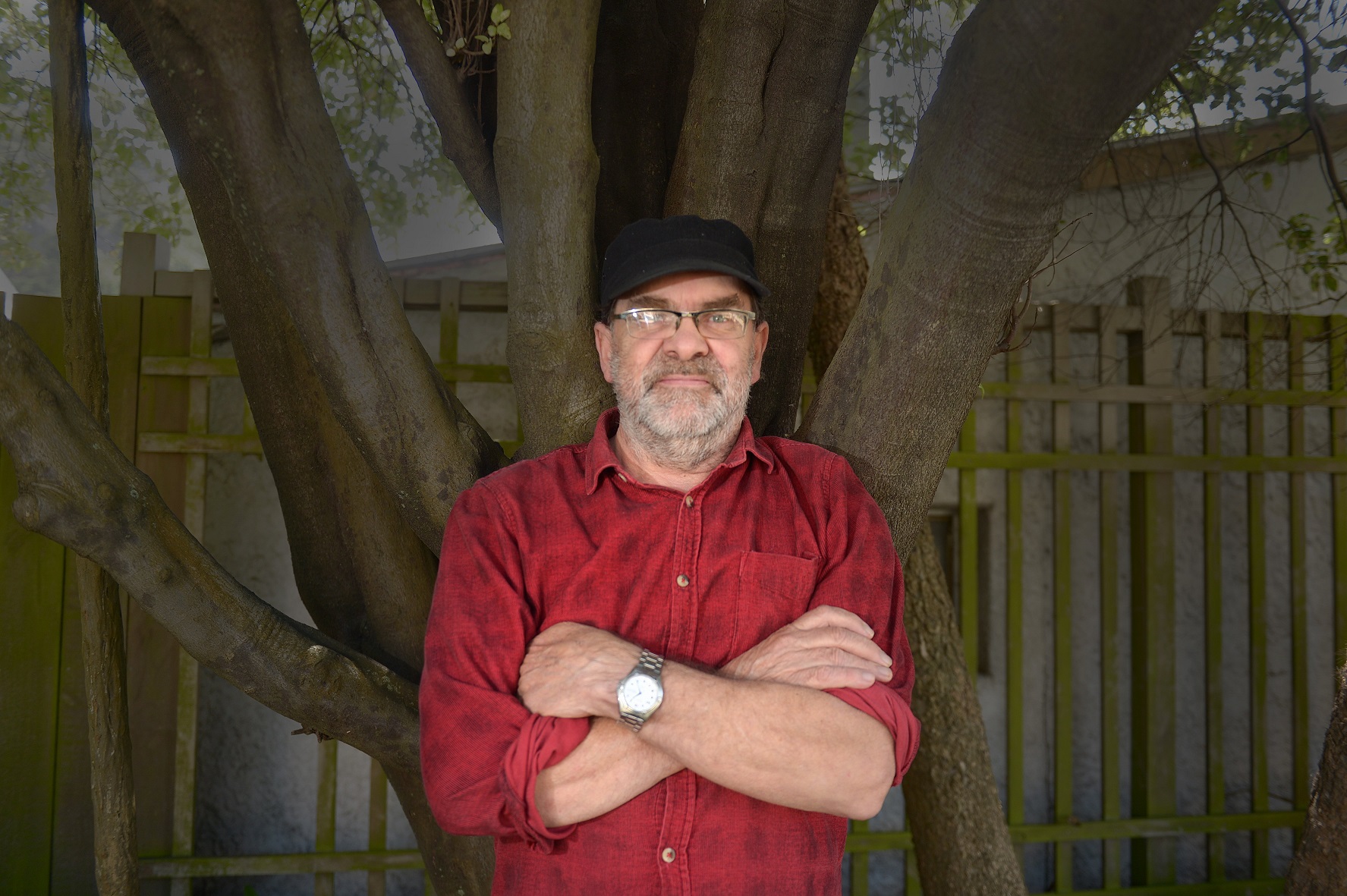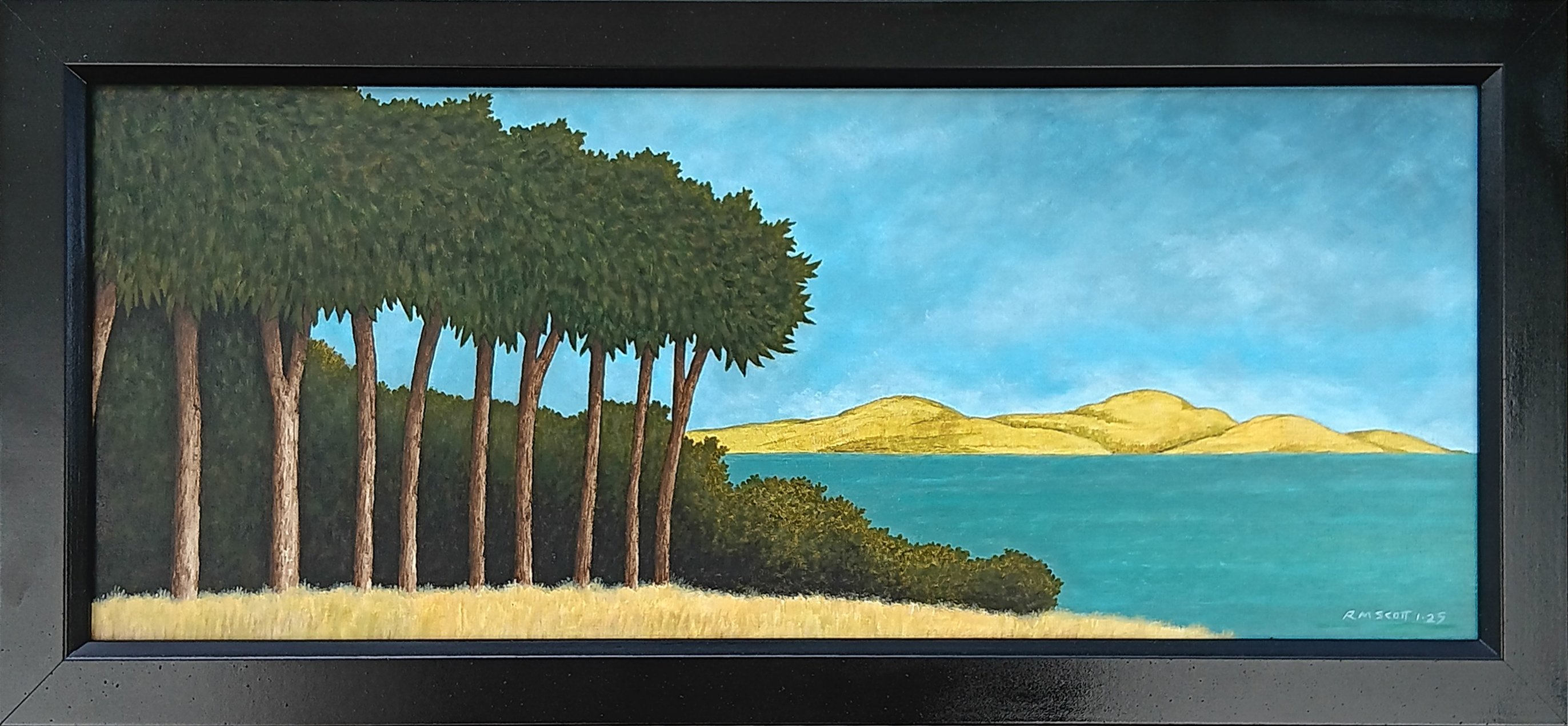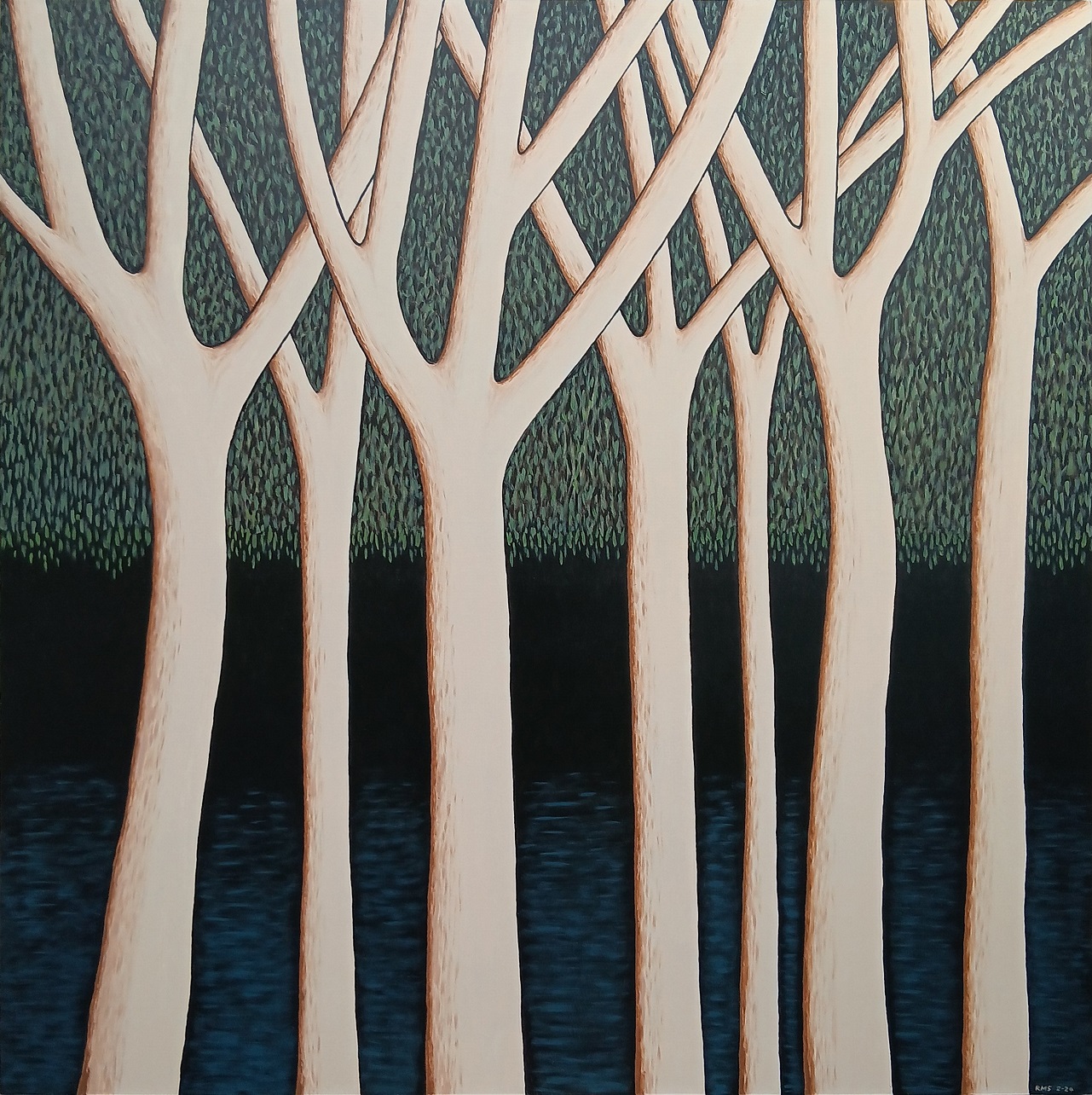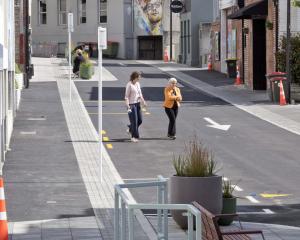
Music and painting go hand in hand for Robert Scott.
The guitarist and songwriter for Flying Nun bands The Bats and The Clean, finds if he is working on his music, he often has painting or visual ideas going through his head.
"So when I’m painting, I’ll often have musical ideas in my head. Although mostly when I paint, I’m listening to other people’s music."
He finds music relaxes a certain part of his brain while painting.
"You’re almost absorbing the music unconsciously or subconsciously, so you’re processing it in a slightly different way. So I really enjoy that."
For his latest exhibition "The Stand", in Dunedin, he has used song titles from his solo albums to name his new works. He always aims for interesting titles for his songs and likes a good double-meaning, "something that makes you think a wee bit".
"Just an experiment, just for fun. Things like Creek Country, Somewhere on the Coast, are the two that come to mind. Sometimes it can be hard thinking of a title for a painting because it’s not necessarily a view of somewhere, it’s an imagined made-up scene."
While music dominated Scott’s career for many years — he dropped out of art school when The Clean took off in the 1980s — these days, painting is just as much the focus as his music.
He wrote music for and recorded The Bats’ latest album while painting the works for his first solo exhibition in a public gallery at Forrester Gallery in Oamaru last year and he was in the final stages of mixing it when painting for his latest show.
"So almost while I was painting, I was retrospectively going back in my head — not actively listening to the mixes, but processing what I thought about them at the time while I was hearing them, and thinking, ‘oh, now that I think about it, I like that mix over that mix’, or ‘I want to change that thing about that mix’."

"There was double meaning on the word recover in terms of reclaiming it and recovering the bush."
In previous shows, his works have been quite disparate and a mixture of different approaches, but local landscapes have always appeared in some way.
"They can be quite scattered in their themes and ideas. So in some ways I’ve been kind of learning how to create a unified theme and look to a body of work, which I haven’t previously really done."
That has seen him work on refining how he painted the trees in his new works and how he wanted to display them. To do that, he spent a lot of time with a pencil and pad drawing small sketches the size of a credit card of his planned works.
"I wanted them to have a unified look as a group of works."
Of the 11 works on show, two are large 1.2m squares which is big for Scott, including one where he has inset his works into the upright panel of an old piano.
He has also included a canvas work in the exhibition.
"I’m sort of in two minds of how I enjoy working on it, but more lately I’ve done a bit more work on canvas."
Scott still likes the hardwood he is known for painting on. He initially chose it because it was flat, stable and he could cut it easily.
"Another good thing was I’ve never had to pay for it. Friends are always renovating, they’re always chopping bits of hardboard out of their houses, so I’ve got an endless supply basically because I’ve collected so much. I see it as recycling and re-using something as well and I kind of like that idea."

"Once I start, I pretty much know how I want it to look. So it’s not like I’m endlessly putting on paint and waiting for inspiration ... I know what I want and I like to layer it up pretty quickly."
While Scott’s preferred subject matter has not changed over the years — even as a child he drew what was around him — his painting style has developed as he reinterprets landscapes more these days.
"I reduce them down to geometric shapes, spaces and areas. I try and reinvent it and take it somewhere and play with it."
While he enjoys his time in the studio painting, he also enjoys the collegiality of music making, even if it involves compromise.
"Painting is a very solitary practice, whereas making music with people is, well, a lot of it, is about compromising as well, so you’re sharing ideas, but you also have to possibly compromise in terms of taking on board a part that someone comes up with, and they really like it, and someone else in the band really likes it, and they put a lot of work into it."
Scott, who grew up on the Taieri, often paints at night in his studio at home or works in the gallery he runs with his wife in Port Chalmers during the day and finds people who come in to the gallery are often fascinated by the process.
"I think they’re quite intrigued that I can sit down at a table like this and have the board in front of me and just be going like that. They think I should be in a studio with it up on the wall, and I should be in a paint-splattered tunic and stuff like that."
There is nothing magical about the process, though people might think so, he says.
"I can just sit down and know exactly what I’m working on and go for it. So in some ways, it’s like a work process, like a physical process. It’s not something magical and mysterious."
Having been playing music since he was 10 — he first learned the piano and trumpet — he is used to feedback and reviews of his music. But whatever people think of his work, painting or music, at the end of the day he aims to do it to the best of his ability.
"In some ways, [it’s best to] not overanalyze either or think too much about them."

"Thinking about what you have done previously and ... how you’d like to improve it."
At the end of the day, it comes down to decision-making at the time and the need to meet deadlines, whether self-imposed or budget-imposed.
"Some of these paintings, I’ll be halfway through them and go ‘I don’t like what those branches are doing’, so I’ll go in and actually paint them out, place them in another way, and that’s like editing and mixing songs, making those changes."
Going through those processes, he finds he is always evaluating what he has done.
"You make that change, and hopefully it’s the correct one, and it has to be, because you’ve decided it is, and it’s only later you come back with a bit of objectivity and it becomes clearer that it was a good move or not."
Painting and music do differ when it comes to people’s access to it.
"With the music, a lot of people get to basically buy a copy of what you’ve made, and it’s all the same. With the painting, it’s one thing, and someone hopefully buys it, and they enjoy it, and other people might see it. It’s a much more limited interaction."
Although he says you could almost equate an opening night to a concert.
"So at a gig you present your works, it’s in a one-off. So you could actually say it’s almost like you’re doing a painting in front of a crowd, because you’re creating a piece, you’re creating versions of the song, and then with a painting exhibition, you’ve got people viewing your works, but the work process is finished, so it’s just you presenting the static finished piece in front of people."
To see:
"Robert Scott: The Stand", RDS Gallery, February 14-March 31; Robert Scott will play at Maggies, February 28.












